João Luiz Rebelatto
Age of Information in Multi-Relay Networks with Maximum Age Scheduling
Mar 20, 2025Abstract:We propose and evaluate age of information (AoI)-aware multiple access mechanisms for the Internet of Things (IoT) in multi-relay two-hop networks. The network considered comprises end devices (EDs) communicating with a set of relays in ALOHA fashion, with new information packets to be potentially transmitted every time slot. The relays, in turn, forward the collected packets to an access point (AP), the final destination of the information generated by the EDs. More specifically, in this work we investigate the performance of four age-aware algorithms that prioritize older packets to be transmitted, namely max-age matching (MAM), iterative max-age scheduling (IMAS), age-based delayed request (ABDR), and buffered ABDR (B-ABDR). The former two algorithms are adapted into the multi-relay setup from previous research, and achieve satisfactory average AoI and average peak AoI performance, at the expense of a significant amount of information exchange between the relays and the AP. The latter two algorithms are newly proposed to let relays decide which one(s) will transmit in a given time slot, requiring less signaling than the former algorithms. We provide an analytical formulation for the AoI lower bound performance, compare the performance of all algorithms in this set-up, and show that they approach the lower bound. The latter holds especially true for B-ABDR, which approaches the lower bound the most closely, tilting the scale in its favor, as it also requires far less signaling than MAM and IMAS.
Reinforcenment Learning-Aided NOMA Random Access: An AoI-Based Timeliness Perspective
Oct 07, 2024Abstract:In this paper, we investigate the age-of-information (AoI) of a power domain non-orthogonal multiple access (NOMA) network, where multiple internet-of-things (IoT) devices transmit to a common gateway in a grant-free random fashion. More specifically, we consider a framed setup composed of multiple time slots, and resort to the $Q$-learning algorithm to properly define, in a distributed manner, the time slot and the power level each IoT device transmits within a frame. In the proposed AoI-QL-NOMA scheme, the $Q$-learning reward is adapted with the aim of minimizing the average AoI of the network, while only requiring a single feedback bit per time slot, in a frame basis. Our results show that AoI-QL-NOMA significantly improves the AoI performance compared to some recently proposed schemes, without significantly reducing the network throughput.
Probabilistic Allocation of Payload Code Rate and Header Copies in LR-FHSS Networks
Oct 07, 2024



Abstract:We evaluate the performance of the LoRaWAN Long-Range Frequency Hopping Spread Spectrum (LR-FHSS) technique using a device-level probabilistic strategy for code rate and header replica allocation. Specifically, we investigate the effects of different header replica and code rate allocations at each end-device, guided by a probability distribution provided by the network server. As a benchmark, we compare the proposed strategy with the standardized LR-FHSS data rates DR8 and DR9. Our numerical results demonstrate that the proposed strategy consistently outperforms the DR8 and DR9 standard data rates across all considered scenarios. Notably, our findings reveal that the optimal distribution rarely includes data rate DR9, while data rate DR8 significantly contributes to the goodput and energy efficiency optimizations.
Age-of-Information Dependent Random Access in NOMA-Aided Multiple-Relay Slotted ALOHA
Apr 18, 2023Abstract:We propose and evaluate the performance of a Non-Orthogonal Multiple Access (NOMA) dual-hop multiple relay (MR) network from an information freshness perspective using the Age of Information (AoI) metric. More specifically, we consider an age dependent (AD) policy, named as AD-NOMA- MR, in which users only transmit, with a given probability, after they reach a certain age threshold. The packets sent by the users are potentially received by the relays, and then forwarded to a common sink in a NOMA fashion by randomly selecting one of the available power levels, and multiple packets are received if all selected levels are unique. We derive analytical expressions for the average AoI of AD-NOMA-MR. Through numerical and simulation results, we show that the proposed policy can improve the average AoI up to 76.6% when compared to a previously proposed AD Orthogonal Multiple Access MR policy.
Network Slicing for eMBB and mMTC with NOMA and Space Diversity Reception
Jan 13, 2021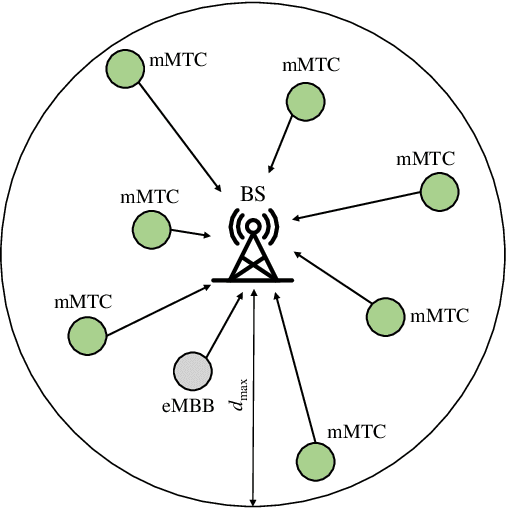
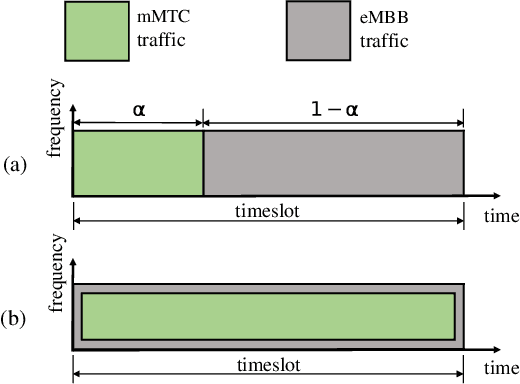
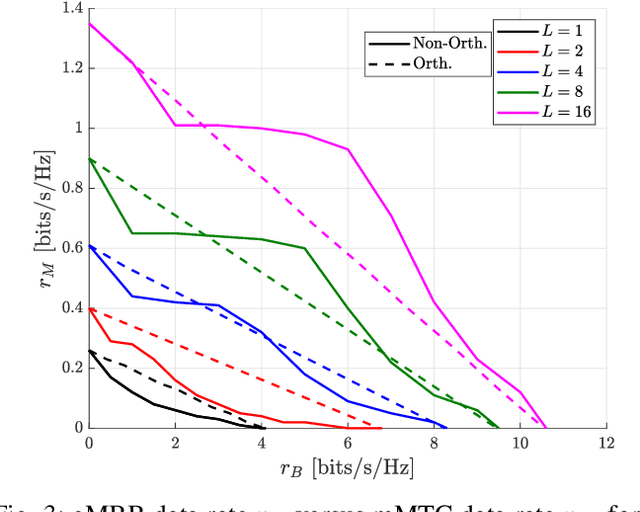
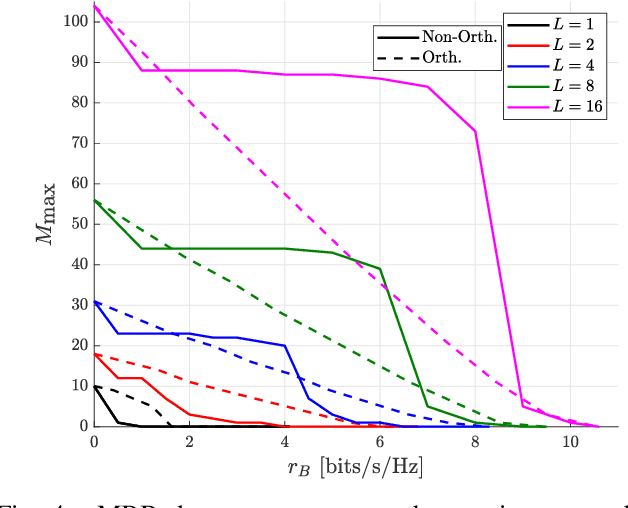
Abstract:In this work we study the coexistence in the same Radio Access Network (RAN) of two generic services present in the Fifth Generation (5G) of wireless communication systems: enhanced Mobile BroadBand (eMBB) and massive Machine-Type Communications (mMTC). eMBB services are requested for applications that demand extremely high data rates and moderate requirements on latency and reliability, whereas mMTC enables applications for connecting a massive number of low-power and low-complexity devices. The coexistence of both services is enabled by means of network slicing and Non-Orthogonal Multiple Access (NOMA) with Successive Interference Cancellation (SIC) decoding. Under the orthogonal slicing, the radio resources are exclusively allocated to each service, while in the non-orthogonal slicing the traffics from both services overlap in the same radio resources. We evaluate the uplink performance of both services in a scenario with a multi-antenna Base Station (BS). Our simulation results show that the performance gains obtained through multiple receive antennas are more accentuated for the non-orthogonal slicing than for the orthogonal allocation of resources, such that the non-orthogonal slicing outperforms its orthogonal counterpart in terms of achievable data rates or number of connected devices as the number of receive antennas increases.
Non-Orthogonal Multiple Access and Network Slicing: Scalable Coexistence of eMBB and URLLC
Jan 12, 2021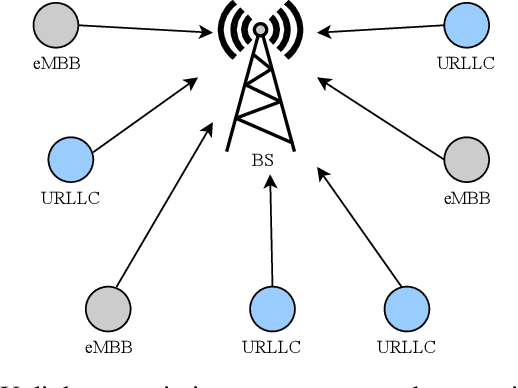
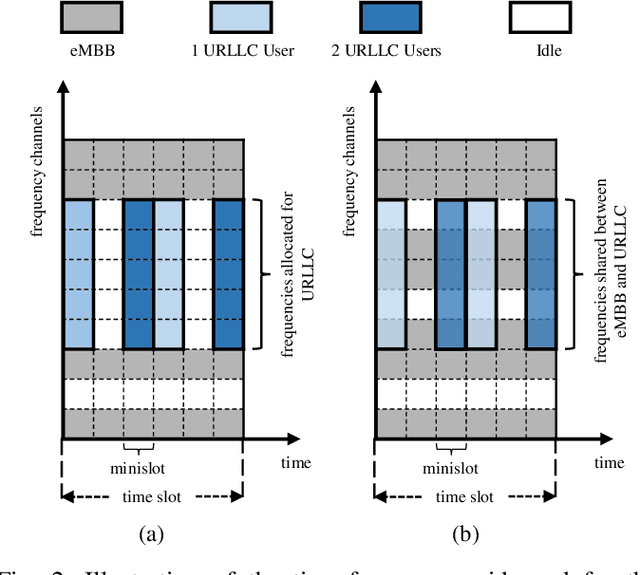
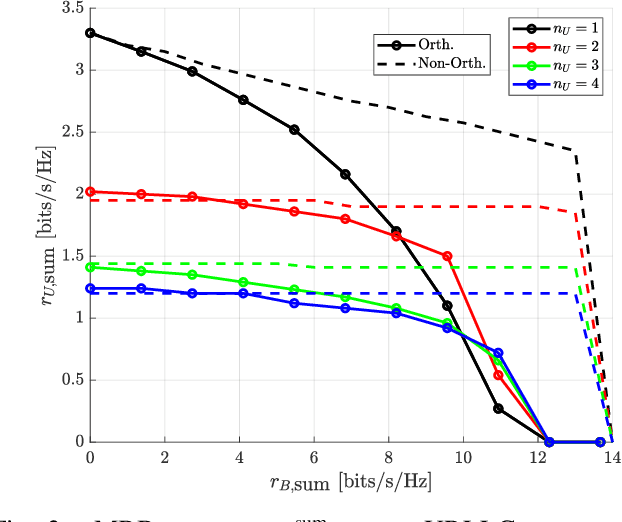
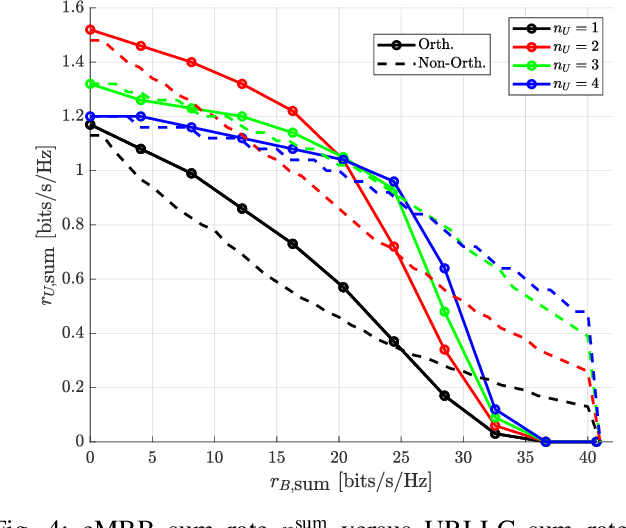
Abstract:The 5G systems will feature three generic services: enhanced Mobile BroadBand (eMBB), massive Machine-Type Communications (mMTC) and Ultra-Reliable and Low-Latency Communications (URLLC). The diverse requirements of these services in terms of data-rates, number of connected devices, latency and reliability can lead to a sub-optimal use of the 5G network, thus network slicing is proposed as a solution that creates customized slices of the network specifically designed to meet the requirements of each service. Under the network slicing, the radio resources can be shared in orthogonal and non-orthogonal schemes. Motivated by Industrial Internet of Things (IIoT) scenarios where a large number of sensors may require connectivity with stringent requirements of latency and reliability, we propose the use of Non-Orthogonal Multiple Access (NOMA) to improve the number of URLLC users that are connected in the uplink to the same base station (BS), for both orthogonal and non-orthogonal network slicing with eMBB users. The multiple URLLC users transmit simultaneously and across multiple frequency channels. We set the reliability requirements for the two services and analyze their pair of sum rates. We show that, even with overlapping transmissions from multiple eMBB and URLLC users, the use of NOMA techniques allows us to guarantee the reliability requirements for both services.
 Add to Chrome
Add to Chrome Add to Firefox
Add to Firefox Add to Edge
Add to Edge